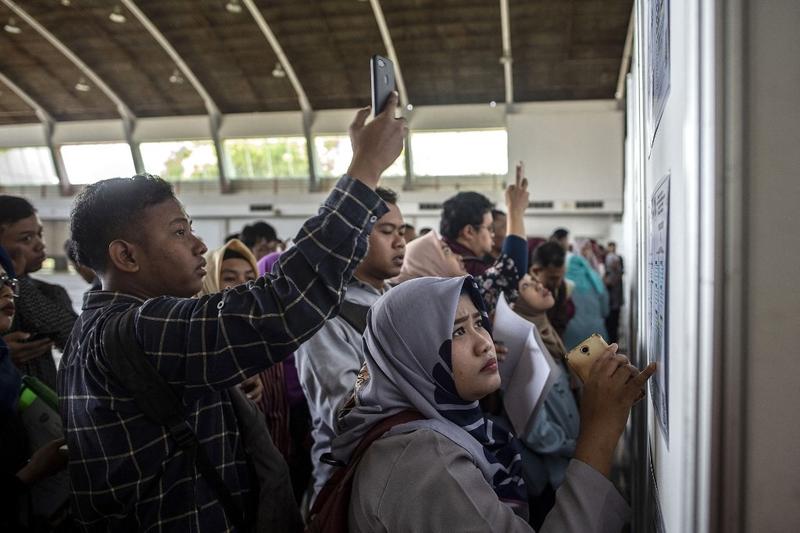 Indonesian jobseekers gather at a job fair in Surabaya on Sept 10, 2019. (PHOTO / AFP)
Indonesian jobseekers gather at a job fair in Surabaya on Sept 10, 2019. (PHOTO / AFP)
The COVID-19 pandemic will cause a “sustained and pronounced increase in unemployment” with low- and middle-income countries that have lagged behind in vaccinations suffering the biggest blow, according to the International Labor Organization.
The ILO fears not enough jobs will be created to accommodate those who lost employment as a result of COVID-19, plus new labor-market entrants. The global shortfall is estimated to be 75 million this year, and 23 million in 2022.
“Projected employment growth will be too weak to provide sufficient employment opportunities for those who became inactive or unemployed during the pandemic and for younger cohorts entering the labor market,” the ILO said. “Many previously inactive workers will enter the labor force but will not be able to find employment.”
The ILO fears not enough jobs will be created to accommodate those who lost employment as a result of COVID-19, plus new labor-market entrants. The global shortfall is estimated to be 75 million this year, and 23 million in 2022
ALSO READ: Job seekers find solace in opportunities online
The Geneva-based body’s prediction is the latest evidence that the pandemic has reversed years of progressive gains to welfare around the world.
Not only has unemployment risen in many countries despite furlough programs to help firms retain staff, but the headline rate masks the extent of the damage. Many people, particularly women and the young, have left the labor market and aren’t being counted.
READ MORE: UK urged to extend job aid as redundancies loom
In addition, schooling has been disrupted in many places due to the need to stem spread of the disease.
The ILO estimated that those jobs that are created are likely to be lower quality, with the problem most severe in poorer countries with large informal economies.
“The crisis is likely to aggravate inequality within and between countries for years to come,” the ILO said. “It poses the risk of creating an additional dimension of economic and social scarring at the international level that will manifest itself in slower and more uneven progress toward poverty reduction.”


